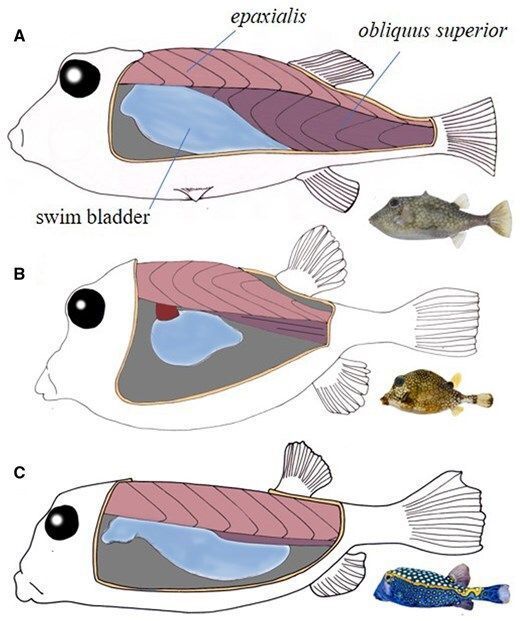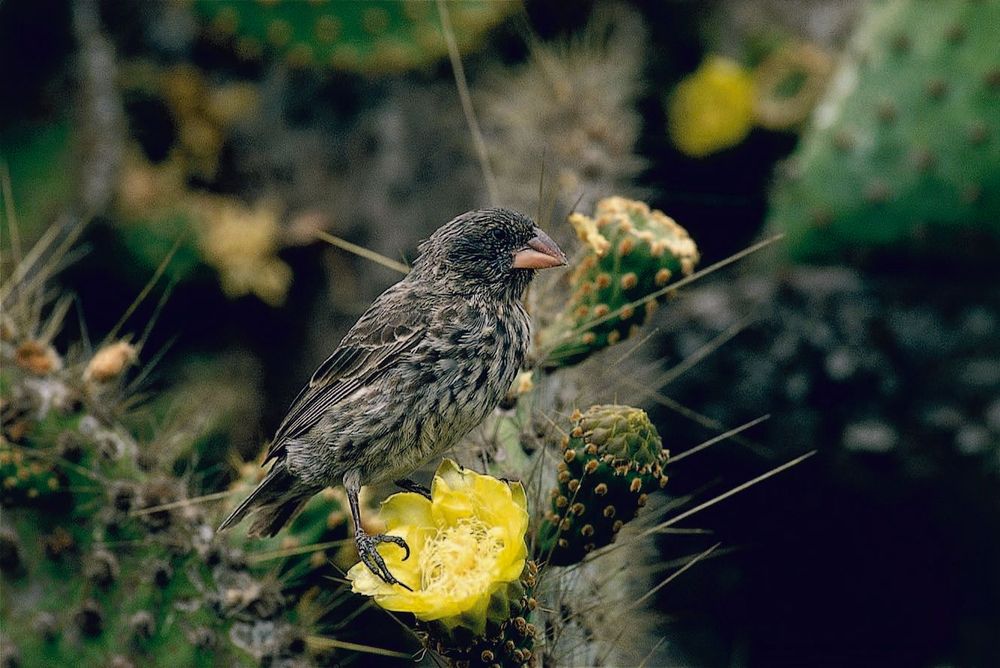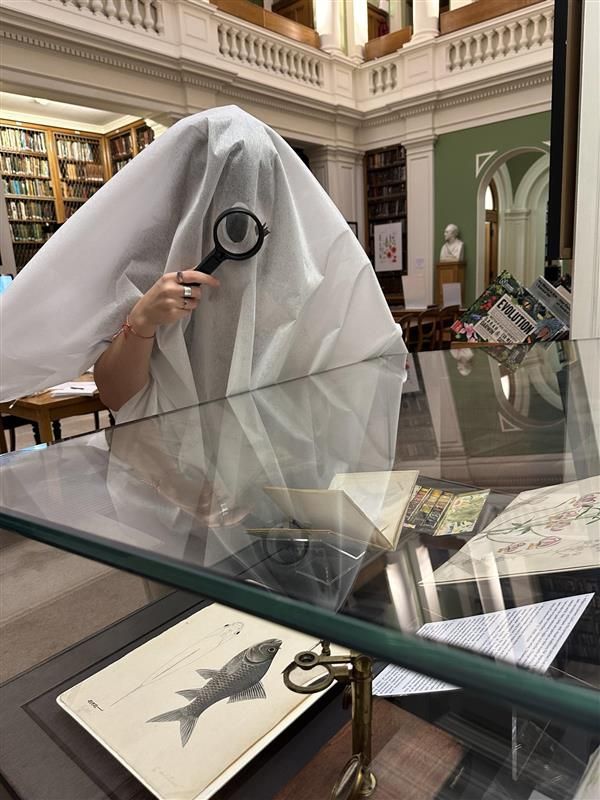
Blog: https://www.linnean.org/news/categories/the-paper-trail
Not quite as catchy as the Queen hit, the phylogeny of broad-nosed weevils was explored using mitochondrial genomes of 130 species, helping to classify the subfamily & uncover their biogeography! 🌍👇🧪
doi.org/10.1093/zool...
@linneansociety.bsky.social

Not quite as catchy as the Queen hit, the phylogeny of broad-nosed weevils was explored using mitochondrial genomes of 130 species, helping to classify the subfamily & uncover their biogeography! 🌍👇🧪
doi.org/10.1093/zool...
@linneansociety.bsky.social
It turns out all species (Atlantic & Pacific) do, yet little is known about how this evolved. A novel structure found only in the Atlantic species offered the answer, but it isn't quite what you think...🌍 🧪
doi.org/10.1093/biol...

It turns out all species (Atlantic & Pacific) do, yet little is known about how this evolved. A novel structure found only in the Atlantic species offered the answer, but it isn't quite what you think...🌍 🧪
doi.org/10.1093/biol...

doi.org/10.1093/biol...

doi.org/10.1093/biol...

doi.org/10.1093/botl...

doi.org/10.1093/botl...

We studied the historical biogeography of Sceloporus lizards and the link between their dispersal and climatic niches 🌎🌦️ @fabrovillalobos.bsky.social @ndimhypervol.bsky.social @biojlinnsoc.bsky.social
Learn more here 👇:
academic.oup.com/biolinnean/a...

We studied the historical biogeography of Sceloporus lizards and the link between their dispersal and climatic niches 🌎🌦️ @fabrovillalobos.bsky.social @ndimhypervol.bsky.social @biojlinnsoc.bsky.social
Learn more here 👇:
academic.oup.com/biolinnean/a...

Little is known about the interactions between spiders & bromeliads in the Caatinga, until now! Looking at 41 plants, the presence of spiders led to reduced leaf & fruit growth, suggesting a parasitic interaction!🌍🧪
doi.org/10.1093/biol...

Little is known about the interactions between spiders & bromeliads in the Caatinga, until now! Looking at 41 plants, the presence of spiders led to reduced leaf & fruit growth, suggesting a parasitic interaction!🌍🧪
doi.org/10.1093/biol...
Ghosts of the past come back to haunt the genetic record of island colonisation events, revealing silent extinctions! Written by guest blogger Adam Brachtl, this blog explores how molecular genetics can uncover these hidden stories...(1/6) 🌍🧪👇
www.linnean.org/news/2025/11...

Ghosts of the past come back to haunt the genetic record of island colonisation events, revealing silent extinctions! Written by guest blogger Adam Brachtl, this blog explores how molecular genetics can uncover these hidden stories...(1/6) 🌍🧪👇
www.linnean.org/news/2025/11...
By comparing Afrotropical & European temperate species, distinct latitudinal differences in feather growth rates were found, with tropical passerines growing wing feathers faster! Why? Take a beak to find out...

By comparing Afrotropical & European temperate species, distinct latitudinal differences in feather growth rates were found, with tropical passerines growing wing feathers faster! Why? Take a beak to find out...
Awarded annually in memory of Dr John C. Marsden, the prize celebrates outstanding doctoral theses in biology (excluding botany): oxford.ly/3Jnp0B9

Awarded annually in memory of Dr John C. Marsden, the prize celebrates outstanding doctoral theses in biology (excluding botany): oxford.ly/3Jnp0B9
buff.ly/WTlIxLm
Want to submit? Do so by the 20 May 2026!

buff.ly/WTlIxLm
Want to submit? Do so by the 20 May 2026!
doi.org/10.1093/zool...
@linneansociety.bsky.social

doi.org/10.1093/zool...
@linneansociety.bsky.social


The acacia fruit doesn't fall far from the evolutionary tree in this new blog, written by guest blogger Josie Cooper! Ever wondered how plants defend themselves from plant-eating predators? In the case of swollen-thorn acacias, the answer is ants...a 🧵 (1/6) 🌍🧪
buff.ly/Sm4NQsQ

The acacia fruit doesn't fall far from the evolutionary tree in this new blog, written by guest blogger Josie Cooper! Ever wondered how plants defend themselves from plant-eating predators? In the case of swollen-thorn acacias, the answer is ants...a 🧵 (1/6) 🌍🧪
buff.ly/Sm4NQsQ
academic.oup.com/biolinnean/p...
@linneansociety.bsky.social

academic.oup.com/biolinnean/p...
@linneansociety.bsky.social
DNA & #Climate models revealed the diversification & dispersal history of the Southern Swallowtail butterfly, as well as predicting an 89% decline in suitable habitat by 2070...highlighting the need for urgent #conservation. 🌍🧪👇

DNA & #Climate models revealed the diversification & dispersal history of the Southern Swallowtail butterfly, as well as predicting an 89% decline in suitable habitat by 2070...highlighting the need for urgent #conservation. 🌍🧪👇
Ghost species (no, not species of ghost) are extinct, unknown & unsampled taxa...and they vastly outnumber those included in phylogenetics. This hidden diversity can complicate phylogenetic signals of horizontal gene flow, impacting their study...(1/2)🧪

Ghost species (no, not species of ghost) are extinct, unknown & unsampled taxa...and they vastly outnumber those included in phylogenetics. This hidden diversity can complicate phylogenetic signals of horizontal gene flow, impacting their study...(1/2)🧪
Pterostylis orchids use sexual deception as a pollination strategy, with fungus gnats (Diptera) falling victim, acting as the main pollinators of these deceptive plants! 🌍🧪👇
academic.oup.com/botlinnean/a...

Pterostylis orchids use sexual deception as a pollination strategy, with fungus gnats (Diptera) falling victim, acting as the main pollinators of these deceptive plants! 🌍🧪👇
academic.oup.com/botlinnean/a...
Today we're sharing molecular biologist Glenn Yannic, whose research focuses on the consequences of environmental & anthropogenic changes on the genetic diversity of alpine & arctic species.
Book to see Glenn Nov 20 🌍🧪👇
buff.ly/bLADJcs.?mso...

Today we're sharing molecular biologist Glenn Yannic, whose research focuses on the consequences of environmental & anthropogenic changes on the genetic diversity of alpine & arctic species.
Book to see Glenn Nov 20 🌍🧪👇
buff.ly/bLADJcs.?mso...
Today we're highlighting Chloe Haberkorn, a biologist who specialises in evolutionary genomics, currently in yeast! Her PhD focused on resistance mechanisms in bed bugs (scream).
Come see Chloe on Nov 20 🧪🌍👇
buff.ly/bLADJcsmsock...
@chloehbk.bsky.social

Today we're highlighting Chloe Haberkorn, a biologist who specialises in evolutionary genomics, currently in yeast! Her PhD focused on resistance mechanisms in bed bugs (scream).
Come see Chloe on Nov 20 🧪🌍👇
buff.ly/bLADJcsmsock...
@chloehbk.bsky.social

